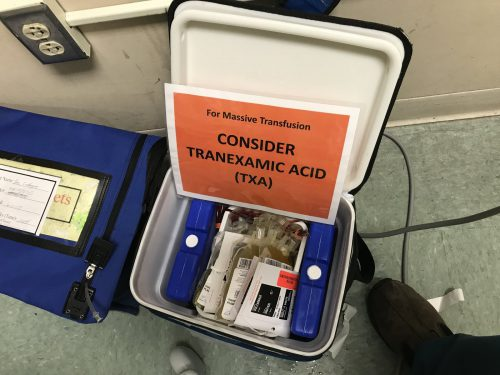Traumatic injury is a continuum ranging from very minor to immediately fatal. The mortality rate along that continuum rises exponentially as the Injury Severity Score (ISS) increases. We long ago moved away from the philosophy of keeping someone alive at all costs to embracing the concept of quality of life. We have become more thoughtful about considering patient and family input in difficult cases.
This occurs more frequently when we treat geriatric patients. The mortality for a given ISS increases even more steeply than in younger patients and continues to accelerate for each decade of life. It is becoming routine to have goals of care discussions with patients and their families in most areas of medicine. Although commonplace in specialties like oncology, it is not as common in trauma care.
Withdrawal of life support is one of the endpoints of these goals of care discussions. However, making such a decision with the patient and/or family is challenging. Too soon, and there may be missed opportunities for recovery. Too late, and the patient and family may be further traumatized by futile or undesired care.
Is it possible to identify the common factors that predict appropriate withdrawal of care? The University of Arizona at Tucson group analyzed the Trauma Quality Improvement Program (TQIP) database on withdrawal of care from 2017-2019. The authors included only patients aged 65 and older. They sought to identify the predictors of care withdrawal. They also calculated their frailty index to gauge its impact on withdrawal decision-making.
Here are the factoids:
- Over 150K patients were included in the analysis, with a mean age of 77 and predominantly blunt mechanism (97%)
- About 19% were judged to be frail by applying an 11-variable frailty index
- About 1 in 10 had withdrawal of support
- Factors that increased the likelihood of support withdrawal were increasing age (1.4x more likely), frailty (1.4x), impaired activities of daily living (ADLs) (2.6x), and ventilator requirement (13x)
- There was no difference between Level I and Level II trauma centers
- Only 9% of patients had an advance directive
- Interestingly, 19% of patients who had support withdrawn did not die
Bottom line: The authors only attempted to describe what factors were more likely to be present in patients who underwent withdrawal of care. A simple TQIP database analysis does not contain the data necessary to reliably develop suggested criteria. However, this study is very valuable because it offers a possible basic framework.
Age, frailty, ADLs, and vent dependence were the major variables noted. This alone may make the trauma professional more confident in approaching the family in cases where there is no advance directive. Which, unfortunately, is the majority of patients.
But more importantly, we really need to define when the most appropriate time for the withdrawal discussion to occur. It requires a careful balance between potentially stopping too soon and persisting into futility.
In my next post, I’ll review another paper on this topic, using TQIP data, also published earlier this year. I’ll compare and contrast the results and see if we can get a clearer picture of how to proceed in the challenging cases.
Reference: The final decision among the injured elderly, to stop or to continue? Predictors of withdrawal of life-supporting treatment. J Trauma Acute Care Surg. 2023 Jun 1;94(6):778-783.

